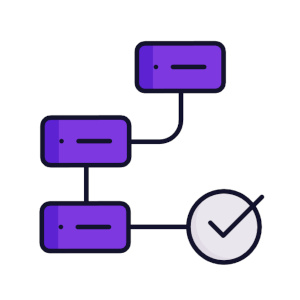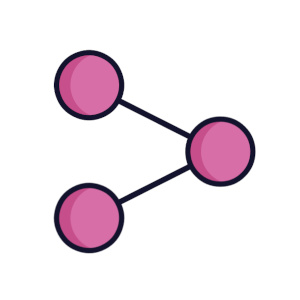Business Process Management Software
Define. Deploy. Automate.
Create and manage projects, tasks, documents, and their related process with fast, clear, and code-free tools designed to promote visibility, accountability, and teamwork.
What is Business Process Management?
Business Process Management (BPM) is a methodology where the intent is to discover, record, model, evaluate, audit, and optimize processes and to ensure outcomes support a businesses strategy and goals. BPM focuses on repetitive and ongoing processes that follow predictable patterns in order to analyze and modify them in ways that promote efficiency, transparency, accountability, and morale within an organization.
Benefits of Business Process Management Software
Business Process Management software pulls resources, goals, and technologies all into one spot to better visualize trends, balance resources, promote teamwork, and meet project and organizational goals with accountability at every step of the way. It provides businesses more control and transparency over internal procedures which simplifies operations and micromanagement needs while still providing teams a clear pathway to success.
Visualize trends, spot & mitigate risks
Teams understand priorities & direction
Instant Transparency for Stakeholders
Automates redundant/mundane processes
Manage & Balance Resource Allocation
Work is clear and laser focused
Improves Collaboration & Communication
Greater Agility in Workspace
Get started with your free account
Business Process Management Software:
Choosing the right software for your project
Today’s best Business Process Management software solutions simplify the way work happens and flows within an organization by automating workflows and providing tools to manage workloads more intelligently and transparently to empower teams and meet organization-wide goals.
1. Automated Workflow Processes
Workflow engines in software exist to decrease mistakes, remove confusion in the workplace, and increase connection by automating basic or duplicate processes. When processes are combined with additional elements such as digital signatures and online forms, true magic happens.
Because workflow engines are such adaptable tools, there are practically unlimited examples. They can intelligently route approval for that new logo your team selected for your company’s rebranding project, send contracts for online board approval so you can purchase that new backdrop for your community theater, or collect and process project expenses using an online form.


2. Integrations
Software integration connects complicated processes and produces a harmonious working environment, which is essential for project success. Whatever tools your employees use on a regular basis, data flows when those systems are linked, allowing for faster and more complete project completion. Stakeholders and project managers alike benefit from the increased visibility that integration gives across the project.
3. Tasks & Deadlines
Every team who has achieved something extraordinary had to set goals in order to get there. Teams who work together to achieve a common purpose can accomplish amazing things. However, achieving a lofty objective demands not only reaching for the stars, but also charting a course to get there. When setting Specific, Measurable, Achievable, Realistic, and Time-bound (SMART) objectives you define tasks and deadlines which ensures every goal, from project targets to bigger corporate objectives, with a clear roadmap and everything your team needs to achieve them.


4. Built-in Team Communication
Users can collaborate and communicate instantaneously in one location thanks to project-level chat, task, and document-specific discussions, and user mentions (also known as @mentions).
Having everything in one place saves time while also providing a detailed history that can help project managers visualize trends and improve inefficiencies in the future. Whether you’re chatting with your entire team about the project’s direction, commenting on a specific task’s progress, or collaborating on what should be included in your next policy and procedure document, having it all in one place saves time while also providing a detailed history that can help project managers visualize trends and improve inefficiencies in the future.
5. Subscriptions & Notifications
In business, transparency is the foundation for trust between a company’s investors, customers, partners, and workers. Transparency in project management fosters trust and collaboration, boosts team productivity, and keeps projects on schedule. The option to subscribe to updates and notifications on tasks or documents helps encourage openness when roles in a project may require emphasis in other areas. When team members and project stakeholders have instant access to critical data, they don’t have to waste time asking for updates or waiting for project approvals. Everything they need to know is available at a glance in real time.


6. Anywhere-Access, Permissions, & Sharing
Whether doing business in an office, at home, or on-the-go, clients and employees have secure access to information and documents regardless of their device or location. Plus, client portals offer a simplified, personalized user experience that allows clients to access files, papers, forms, and contracts that require signatures, tasks, and even live chat with agents and employees. These real-time user interactions are a safe and mobile-friendly solution to improve customer and team cooperation and collaboration.
Get started with your free account